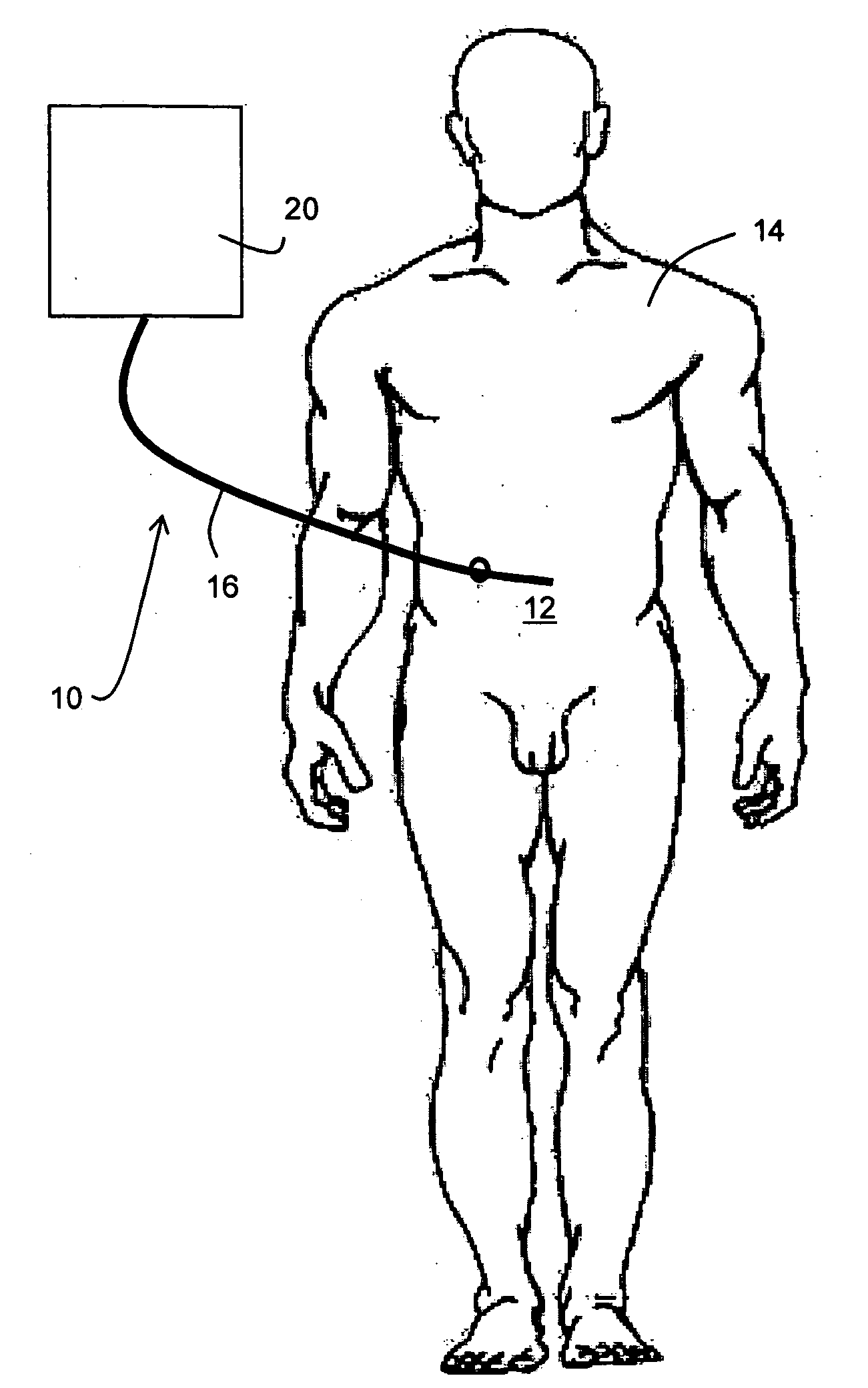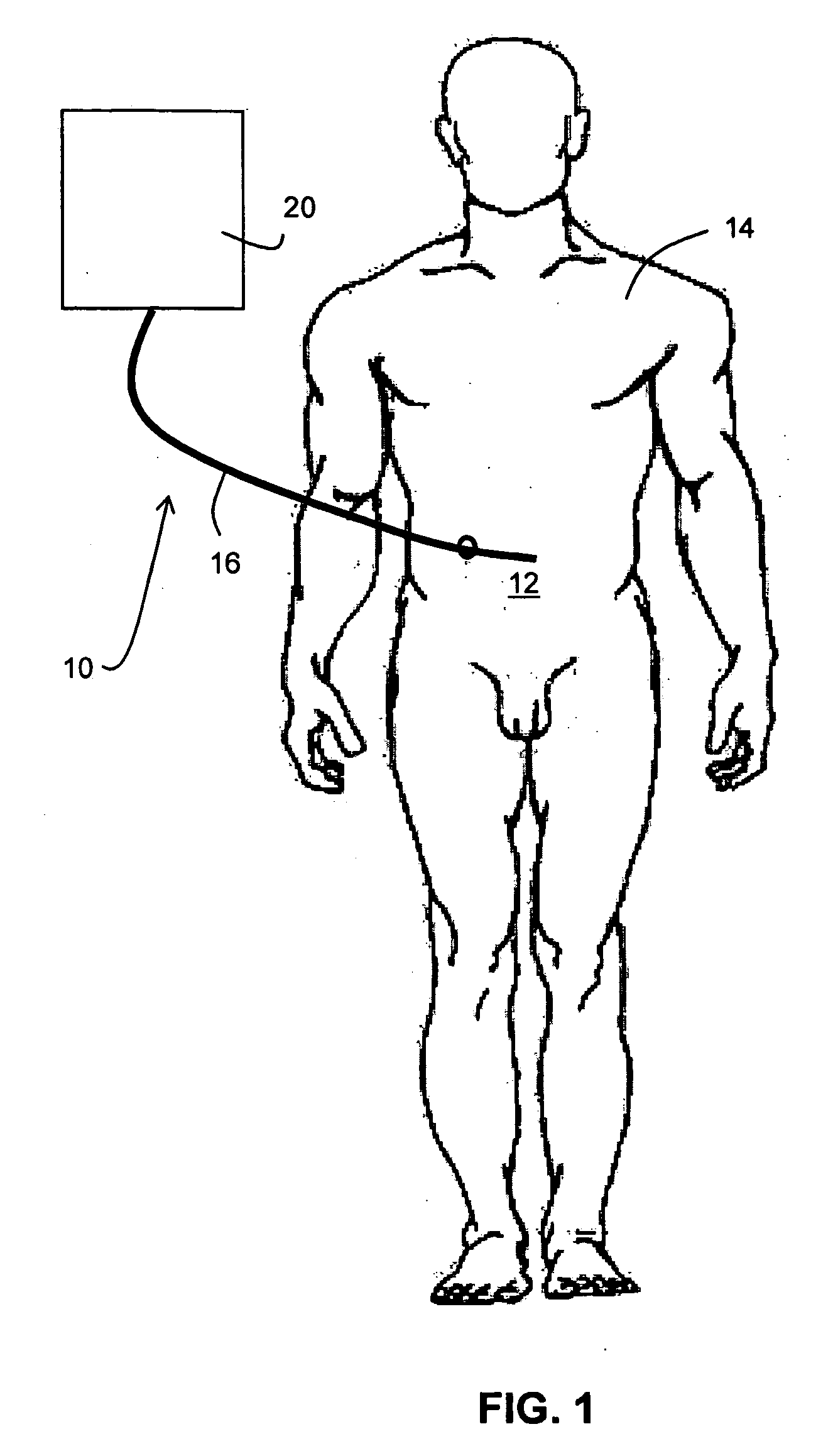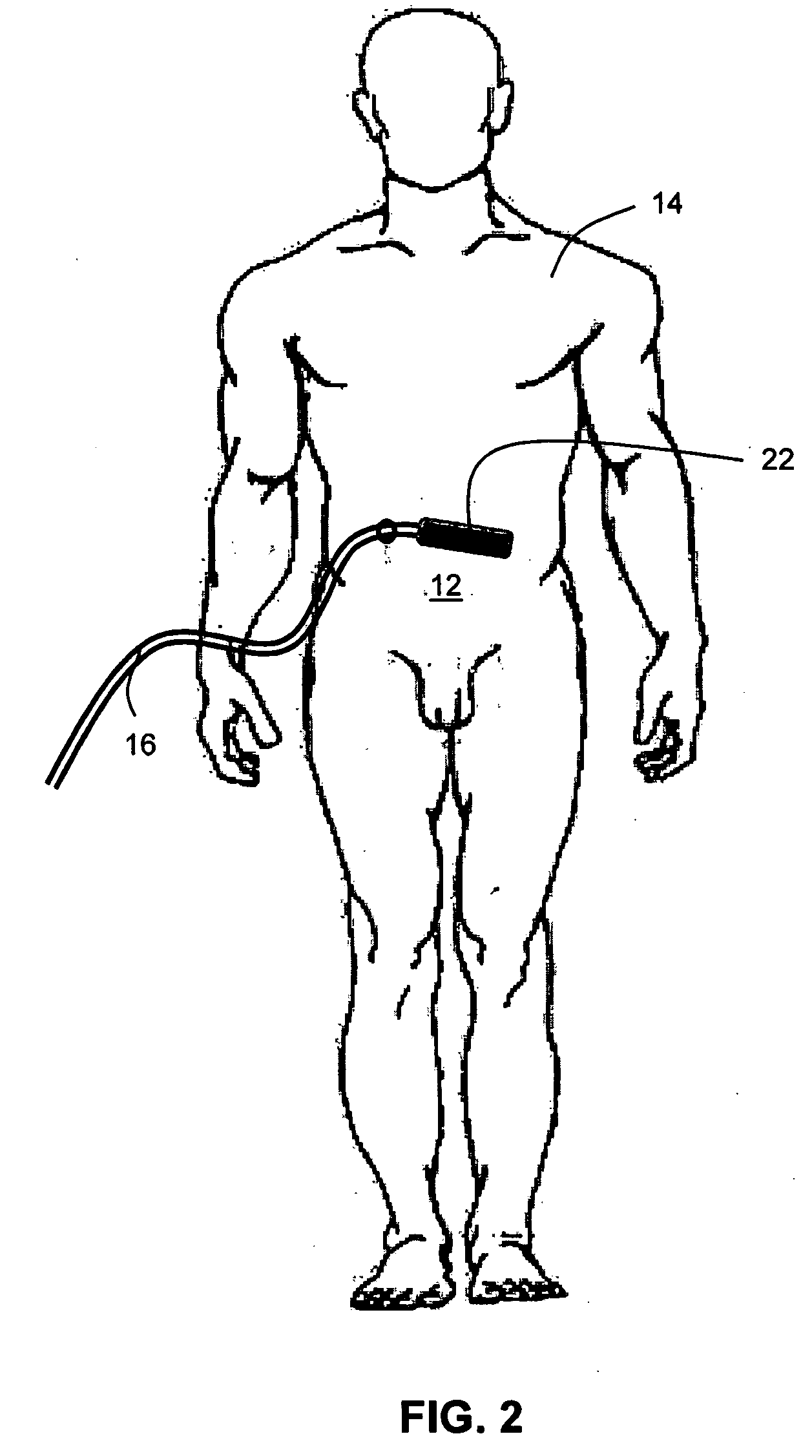Hypothermia Devices and Methods
- Summary
- Abstract
- Description
- Claims
- Application Information
AI Technical Summary
Benefits of technology
Problems solved by technology
Method used
Image
Examples
Embodiment Construction
[0034]Embodiments of the invention provide apparatus, systems and methods for providing therapeutic hypothermia through minimally invasive access to the peritoneal cavity. Many embodiments provide a system for providing hypothermia, resuscitation or other treatment in response to stroke, myocardial infarction, blood loss or any condition resulting in decreased perfusion to one or more locations in the body, including both internal organs and the extremities. Embodiments of the invention may also be used with cadavers to preserve organs for later transplant. The term “patient” may be used herein to denote either living subjects requiring hypothermia therapy or dead subjects whose organs need to be preserved for transplant.
[0035]FIG. 1 shows a system 10 for the delivery of hypothermic or other fluid from a fluid source 20 through a fluid delivery member 16 (including, e.g., a catheter) to a peritoneal or other tissue cavity 12 of a patient 14. In various embodiments, the delivered flu...
PUM
 Login to View More
Login to View More Abstract
Description
Claims
Application Information
 Login to View More
Login to View More - R&D
- Intellectual Property
- Life Sciences
- Materials
- Tech Scout
- Unparalleled Data Quality
- Higher Quality Content
- 60% Fewer Hallucinations
Browse by: Latest US Patents, China's latest patents, Technical Efficacy Thesaurus, Application Domain, Technology Topic, Popular Technical Reports.
© 2025 PatSnap. All rights reserved.Legal|Privacy policy|Modern Slavery Act Transparency Statement|Sitemap|About US| Contact US: help@patsnap.com



